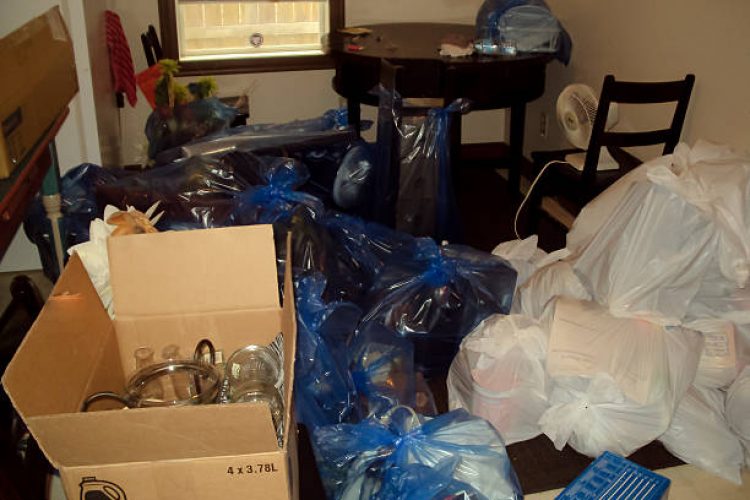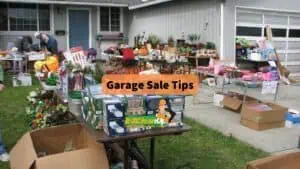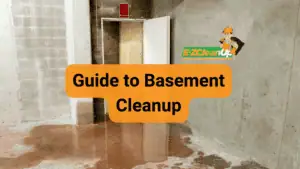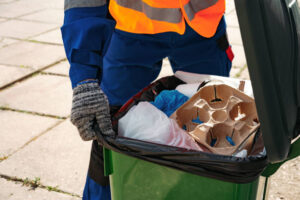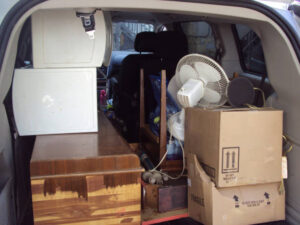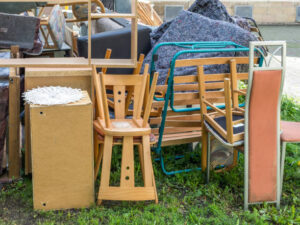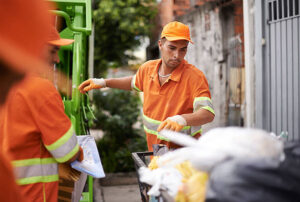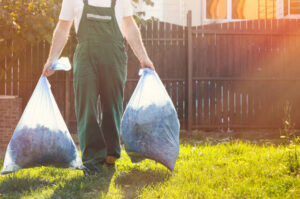Hoarding cleanup is far more than a physical challenge—it’s an emotional journey that requires empathy, patience, and a deep understanding of the mental health complexities involved. With hoarding disorder affecting approximately 2.5% of the population, millions of families face the difficult task of addressing this condition with care and sensitivity.
Whether you’re helping a loved one, working as a professional organizer, or dealing with your own hoarding challenges, approaching the situation with compassion is essential for long-term success. This comprehensive guide will walk you through the process of conducting a hoarding cleanup while preserving dignity, respecting emotions, and creating lasting change.
Understanding Hoarding Disorder: More Than Just Clutter
Before beginning any cleanup, it’s crucial to understand that hoarding disorder is a complex mental illness that goes beyond mere clutter, with individuals grappling with an overwhelming compulsion to accumulate possessions, leading to crowded living spaces that can negatively affect their physical and mental well-being.
Hoarding disorder affects about 2% of the population and needs specialized cleaning approaches that go far beyond regular house cleaning services. This isn’t simply a matter of being messy or disorganized—it’s a recognized mental health condition that requires specialized intervention.
Key Statistics About Hoarding Disorder
Understanding the scope of hoarding disorder helps contextualize the importance of compassionate intervention:
- The pooled prevalence of 2.5 percent underscores that HD is a relatively common mental health condition, affecting a substantial portion of the population
- Prevalence increases linearly by 20% with every 5 years of age
- Higher rates exist for people over 60 years old and people with other psychiatric diagnoses, especially anxiety and depression
- Approximately 50% of individuals with hoarding disorder showed improvement after receiving treatment
These statistics reveal that hoarding is both common and treatable, emphasizing the importance of early, compassionate intervention.
The Psychology Behind Hoarding: Why Compassion Matters
Hoarding is a mental health disorder, and the individual who struggles with it needs empathy and understanding; approaching the cleanup process with compassion and respect for their feelings towards their possessions is essential.
Understanding why people hoard helps inform a more compassionate approach:
Emotional Attachment
Many individuals develop deep emotional connections to their possessions. Each item may represent a memory, a relationship, or a sense of security. Hoarding is a complex issue rooted in deep-seated emotional ties, making it emotionally devastating when others suggest simply discarding these items.
Fear of Waste
Some believe that everything they own has value, and they fear that they will be wasting something if they throw it away. This perspective, while challenging for others to understand, is very real to the person experiencing it.
Decision-Making Difficulties
They may be struggling with decision-making and feel overwhelmed by the prospect of sorting through their possessions. This paralysis can lead to further accumulation rather than progress.
Mental Health Comorbidities
Hoarding takes an emotional toll, often stemming from underlying mental health conditions such as anxiety or obsessive-compulsive disorder. Addressing these underlying conditions is crucial for long-term success.
Approaching the Conversation: Starting with Empathy
Before any physical cleanup begins, there must be a conversation. How you initiate this discussion can significantly impact whether the person accepts help or withdraws further.
Tips for a Compassionate Conversation
1. Choose the Right Time and Setting
Find a private, quiet moment when both parties are calm and have time to talk without interruption.
2. Lead with Concern, Not Criticism
Adopting an empathetic and compassionate approach is key when dealing with hoarding disorder. Express your worry for their safety and well-being rather than judgment about their living conditions.
3. Avoid Ultimatums
Criticizing or pressuring individuals to change their behavior may prove counterproductive, as understanding and addressing the underlying emotional aspects are crucial for any sustainable progress in the recovery journey.
4. Listen Actively
Listen to your loved one and try to understand why they have problems with clutter; letting go of possessions is difficult for a variety of reasons: sentimentality, aesthetics, or an object’s future usefulness.
5. Identify Shared Goals
More often than not, your loved one can recognize at least one issue (limited space, not able to have family over) that makes them unhappy, and that will serve as a good shared starting point.
Creating a Safe and Effective Cleanup Plan
Once the person has agreed to begin the cleanup process, developing a comprehensive plan ensures both safety and emotional well-being.
Step 1: Conduct a Safety Assessment
Safety must always come first. Safety is the primary concern; engage with fire, police and other relevant authorities to understand all the potential hazards before the cleanup begins.
Safety Hazards to Identify:
- Fire hazards from flammable materials
- Blocked exits and pathways
- Structural damage or instability
- Mold growth and air quality issues
- Pest infestations
- Biohazardous materials (human or animal waste, sharps, contaminated items)
Safety assessment comes first; walk through the property and identify blocked pathways, fire hazards, mold growth, pest infestations, and structural damage.
Step 2: Assemble the Right Team
The cleanup process involves sensitive emotional considerations alongside technical expertise in handling potentially hazardous materials. Consider who should be involved:
Professional Help:
- Hoarding cleanup specialists
- Mental health professionals
- Biohazard remediation experts (if needed)
- Pest control services
- Structural engineers (for severe cases)
Personal Support:
- Trusted family members or friends
- Support group members
- Professional organizers trained in hoarding
Step 3: Gather Essential Safety Equipment
Personal protective equipment (PPE) isn’t optional; you’ll need heavy-duty gloves, N95 masks, safety goggles, and disposable coveralls.
Essential Safety Gear:
- Heavy-duty disposable gloves (double layer recommended)
- N95 respirators or better
- Safety goggles or face shields
- Protective coveralls or disposable clothing
- Steel-toed boots
- Hard hats (for severe cases)
- First aid kit
- Fire extinguisher
- Flashlights
Cleaning Supplies:
- Heavy-duty trash bags
- Storage boxes and bins
- Labels and markers
- Cleaning solutions and disinfectants
- Mops, brooms, and vacuums
- Dumpster or junk removal service
Step 4: Develop a Systematic Sorting Process
Professional hoarding cleanup involves safety assessment, systematic sorting into keep/donate/dispose categories, debris removal, deep cleaning, sanitization, and addressing structural hazards using specialized equipment and protocols.
Create Clear Categories:
- Keep – Items with genuine use or sentimental value
- Donate – Usable items in good condition
- Recycle – Materials that can be recycled
- Dispose – Trash and items beyond repair
Sorting Best Practices:
- Decluttering a hoarder’s living space should be approached with patience and collaboration; initiating small, manageable tasks allows the individual to actively participate in decision-making, determining what items to keep and what to discard, respecting the individual’s pace and promoting a sense of ownership in the decluttering process
- Start with one room or even one corner at a time
- Work from the entrance toward the back of the home
- Set realistic daily goals
- Take frequent breaks
The Cleanup Process: Step-by-Step with Compassion
Phase 1: Initial Assessment and Planning
Document the Situation:
Take photographs of each room for insurance purposes and to track progress. This documentation can also be motivating as improvements become visible.
Rate the Severity:
Professional services use a 1-5 scale to assess hoarding levels, with Level 1 being minor clutter and Level 5 representing extreme conditions with structural damage and severe health hazards.
Set Realistic Timelines:
Some individuals work better with intensive cleaning periods, while others prefer gradual progress over extended timeframes. Adjust your approach based on the individual’s emotional readiness and the scope of the situation.
Phase 2: Begin with Low-Stress Areas
Start in rooms with less sentimental attachment, such as bathrooms or hallways. This creates early wins and builds confidence for tackling more emotionally challenging spaces later.
Why This Approach Works:
- Creates visible progress quickly
- Builds trust in the process
- Reduces overwhelming feelings
- Establishes a working rhythm
Phase 3: Involve the Individual in Decisions
Involve the person with a hoarding disorder in decision-making whenever possible; this reduces anxiety and maintains their sense of control during an emotionally challenging process.
Decision-Making Strategies:
- Present one item at a time to avoid overwhelm
- Use gentle questioning: “When did you last use this?” or “Does this serve a purpose in your life today?”
- Respect all “keep” decisions initially, focusing on obvious trash first
- Photograph sentimental items before discarding if appropriate
- Set aside a “maybe” box for items requiring more thought
Phase 4: Address Emotional Challenges
Hoarding cleanup is emotionally intensive; expect tears, anger, and resistance—these reactions are normal and don’t indicate failure.
Emotional Support Strategies:
- Acknowledge feelings without judgment
- Take breaks when emotions run high
- Celebrate small victories
- Remind the person of their identified goals
- Offer reassurance and encouragement
- Have mental health support available
Phase 5: Deep Cleaning and Restoration
Once clutter is removed, thorough cleaning and any necessary repairs restore the space to safe, functional condition.
Deep Cleaning Steps:
- Remove all remaining debris
- Clean and disinfect all surfaces
- Address mold or pest issues
- Repair structural damage
- Replace damaged flooring or fixtures if needed
- Paint walls to refresh the space
- Organize remaining belongings with proper storage solutions
When to Call in Professional Help
While family and friends can provide valuable support, certain situations require professional intervention.
Never attempt cleanup alone if you discover biohazards, extensive mold, or structural damage—these require specialized hoarding cleaning service expertise.
Signs You Need Professionals:
Safety Hazards:
- Biohazard dangers including bloodborne pathogens carrying potential diseases like Hepatitis B, Hepatitis C or HIV/AIDS
- Extensive mold growth
- Severe pest infestations
- Structural instability
- Hazardous materials (chemicals, sharps, contaminated items)
Complexity:
- Multiple rooms at Level 3 or higher
- Years of accumulated items
- Property facing legal action or condemnation
- Individual unwilling to participate without professional facilitation
Emotional Factors:
- Severe mental health complications
- Family conflict preventing progress
- Previous failed cleanup attempts
- Individual requires professional therapeutic support during the process
Choosing Compassionate Professional Services
Choosing the right hoarding cleanup service is a crucial choice that can profoundly affect an individual’s overall well-being and recovery journey; select a service that offers both the necessary technical capabilities and equipment alongside genuine empathy and understanding of your situation.
What to Look For:
- Experience with hoarding cleanups and client testimonials about both physical cleanup and emotional support
- Relevant certifications in biohazard cleanup and specialized training, which indicate that staff are trained to handle biohazardous materials safely and stay current with the latest cleaning standards
- Strict confidentiality about client situations and respect for privacy throughout the process
- Understanding that hoarding is a recognized mental health condition requiring specialized approaches, recognizing that rushed or insensitive approaches can cause psychological harm and setbacks in recovery
Mental Health Resources and Ongoing Support
Cleanup is just the beginning. Long-term success requires addressing the underlying mental health aspects of hoarding disorder.
Professional Treatment Options
There are multiple types of help for individuals with hoarding disorder, including self-help books, support groups, individual talk therapy, medications and group therapy, with new studies underway examining internet-based treatments and emerging evidence supporting peer-facilitated group treatments.
Therapeutic Approaches:
- Cognitive Behavioral Therapy (CBT) – The gold standard for hoarding treatment
- Exposure and Response Prevention
- Motivational interviewing
- Group therapy
- Family therapy
Support Groups and Organizations
Connecting with others who understand the challenges of hoarding can provide invaluable support:
National Resources:
- The International OCD Foundation provides information for families, mental health professionals, and community responders and maintains a resource directory to locate therapists, treatment programs, clinics, and support groups
- The National Alliance on Mental Illness (NAMI) or the International OCD Foundation (IOCDF) can help people with hoarding disorder and their loved ones
- Local support groups through mental health centers
- Online forums and communities
Preventing Re-accumulation: Maintaining Progress
Once the cleanup is complete, implementing strategies to prevent re-accumulation is essential for lasting change.
Establishing New Routines
Daily Habits:
- 15-minute daily decluttering sessions
- “One in, one out” rule for new acquisitions
- Immediate trash disposal
- Regular donation trips
Organizational Systems:
- Implement organizational systems with labeled storage bins and shelves and encourage regular cleaning routines
- Designated spaces for every category of item
- Clear counters and surfaces
- Visible storage to prevent “out of sight, out of mind” accumulation
Ongoing Support:
- Provide emotional support or counseling to address underlying hoarding behaviors
- Regular check-ins with mental health professionals
- Continued participation in support groups
- Family and friends offering accountability without judgment
Addressing Underlying Causes
Many people with hoarding disorder also have other co-occurring mental health issues, such as depression, an anxiety disorder, PTSD, ADHD, or most commonly, Obsessive-Compulsive Disorder (OCD); in some cases, treating the underlying condition can help improve the symptoms of hoarding disorder.
Supporting a Loved One: For Family and Friends
If you’re helping someone with hoarding disorder, remember that your role is to support, not to control.
Do’s and Don’ts
DO:
- Show empathy and patience
- Celebrate small victories
- Respect their feelings about possessions
- Offer ongoing support
- Encourage professional help
- Take care of your own mental health
DON’T:
- Discard the hoarder’s possessions without their consent, as this usually does more harm than good—the hoarder will likely be angry and resentful, damaging the relationship between you, and their process of accumulation will simply begin all over again
- Judge or criticize
- Rush the process
- Make threats or ultimatums
- Enable the hoarding by ignoring serious safety concerns
- Neglect your own needs while helping
Self-Care for Caregivers
Dealing with a loved one’s hoarding can be frustrating and stressful. Take care of yourself by:
- Connecting with others who are also supporting someone with hoarding through peer support
- Setting healthy boundaries
- Taking breaks when needed
- Seeking your own counseling or therapy
- Remembering that you cannot force change—only support it
The Cost of Professional Cleanup
Understanding the financial aspects helps with planning and decision-making.
Factors Affecting Cost
Professional hoarding cleanup costs vary widely based on:
- Size and number of rooms
- Severity level (1-5 scale)
- Presence of biohazards or hazardous materials
- Structural damage requiring repair
- Geographic location
- Amount of debris requiring disposal
Financial Assistance Options
Some situations may qualify for assistance programs, and professional companies can help navigate these options and provide necessary documentation. Additionally, some homeowner’s insurance may cover portions, municipalities may bill for emergency interventions, and assistance programs exist for elderly or disabled individuals.
Success Stories: The Power of Compassionate Intervention
While every hoarding situation is unique, countless individuals have successfully overcome hoarding disorder with compassionate support, professional help, and personal determination.
Hoarding disorder can be treated, and there is hope for returning to a normal life; typically, individuals will continue to face challenges throughout their lives, but staying in treatment may decrease chances that hoarding symptoms and clutter will return.
The journey from overwhelming clutter to a safe, functional home is possible. With patience, understanding, and the right approach, both the living space and the individual’s quality of life can be transformed.
Conclusion: Compassion as the Foundation
Handling hoarding cleanups with compassion isn’t just about being kind—it’s about recognizing that lasting change only occurs when we address both the physical clutter and the emotional complexities underlying hoarding disorder.
Hoarding cleanups require sensitivity, patience, and professionalism; by understanding the disorder and approaching the process with compassion and expertise, you can help make a positive impact on someone’s life.
Whether you’re a family member, friend, or professional, remember that every item represents a decision, every decision represents progress, and every moment of patience contributes to healing. The goal isn’t perfection—it’s creating a safer, healthier environment while preserving dignity and fostering hope for a better future.
With the right approach, resources, and support, hoarding disorder can be managed effectively, allowing individuals to reclaim their homes and their lives.
References
- Psychiatry.org – American Psychiatric Association. “Hoarding Disorder.” https://www.psychiatry.org/patients-families/hoarding-disorder
- PuroClean. “How to Help a Hoarder: Effective Strategies and Support.” https://www.puroclean.com/blog/how-to-help-a-hoarder/
- International OCD Foundation – Hoarding Resources. “About Hoarding Disorder.” https://hoarding.iocdf.org/
- National Alliance on Mental Illness (NAMI). “How can I get help/support for hoarding disorder?” https://helplinefaqs.nami.org/article/50-how-can-i-get-help-support-for-hoarding-disorder
- Nordsletten, A.E., et al. “Epidemiology of hoarding disorder.” British Journal of Psychiatry (2013). https://pubmed.ncbi.nlm.nih.gov/24158881/

